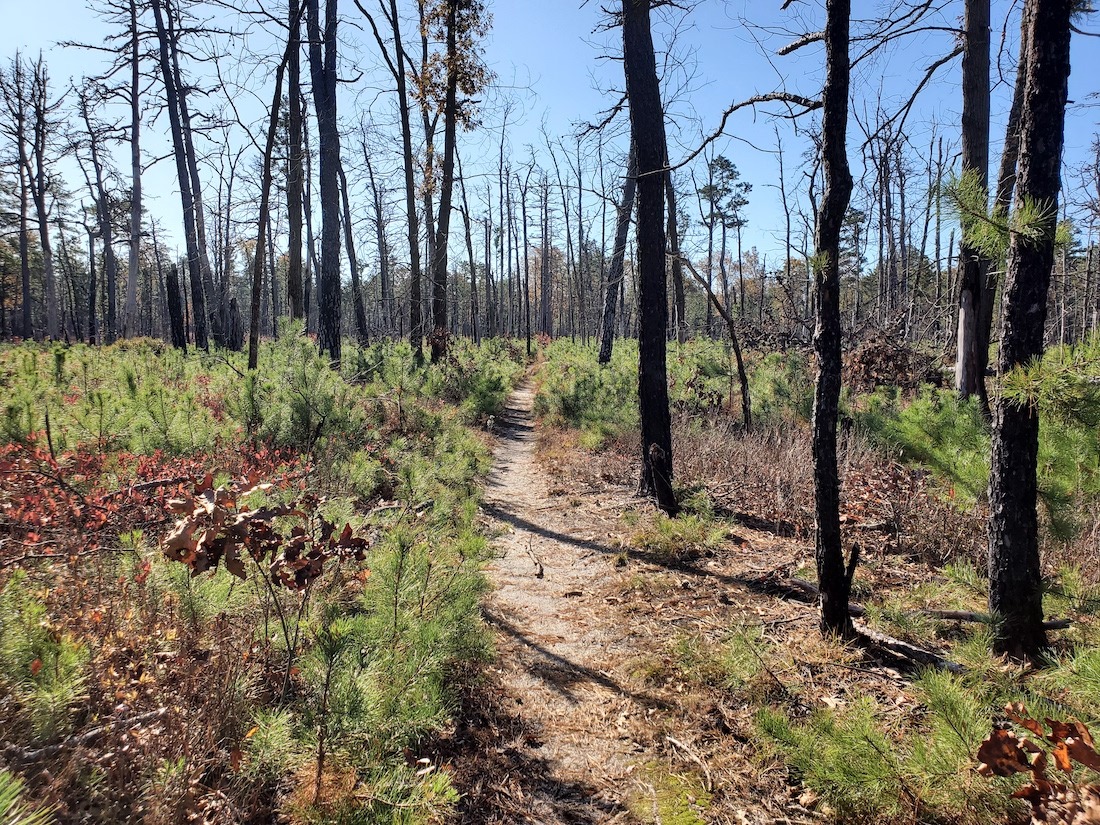This site uses cookies – Learn more.
What Can We Learn from the Pine Barrens?
What Can We Learn from the Pine Barrens?

This summer, the park’s gardens transported visitors to the Pine Barrens, a unique regional ecosystem in New York and New Jersey. As the horticulture exhibition comes to a close, here are two things we can learn from this ecosystem:
Overdevelopment of land negatively impacts forests
Pine Barrens are ecosystems composed of stands of oak and pine trees. Maintained by cycles of rejuvenation, they depend on periodic fires to maintain forest diversity. In healthy forests, recurring burns enable new pines to sprout and also eliminate invasive species that have not coevolved with fires. When fires are suppressed for long periods of time, oaks predominate, outcompeting existing pines, which changes the foundations of the forest. Overdevelopment of land in the Pine Barrens and efforts to protect human property have resulted in fewer natural fires. Thus, urbanization has begun to upset the delicate cycle that preserves the health of the forest.
Water filtration is necessary for a healthy ecosystem
Pine Barrens are also unique because of their low nutrient, acidic, sandy soils. Silica sand in these soils leads to quick drainage, which allows water to pool in underground aquifers. The silica sand filters the water, often releasing iron that gives it a reddish tint and high acidity. Despite this, these aquifers contain some of the purest water in the world. Pine Barrens are especially at risk for environmental degradation because contaminants like petroleum can easily penetrate the soil and destroy natural filtration systems.
Reduction in natural fires and disruption of water filtration are not specific to the Pine Barrens. They affect local communities throughout the United States. Poor land management threatens plant and wildlife diversity across the country. Urbanization and irresponsible building practices reduce the amount of wild land each year. In unique ecosystems like the Pine Barrens, human influence can be even more extreme.
Prior to development, the land that is now Madison Square Park was home to plant communities similar to those of the Pine Barrens––before the city grid, swamps, forests, and savannas covered Manhattan. Through this exhibition, we sought to bring Madison Square Park back to its roots and to highlight the importance of native plants and their role in preserving a healthy ecosystem.
Plants of the Pine Barrens is on view through October 18, 2021.



